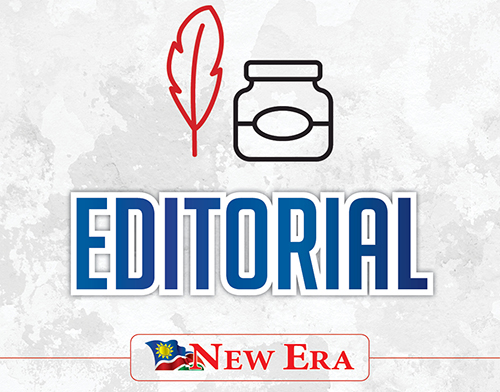To reduce sharply rising inflation rates, central banks have been hiking the rate at which they lend money to commercial banks during the past few years.
The Bank of Namibia (BoN) has religiously followed this trend, despite questions about the efficacy of the central bank’s theory. The basis of the questions stems from the fact that these hikes have been decimating the already-depleted income of the average household, while the banks, who immediately pass the increase on to their clients, have made a killing.
The central bank has in the past used the Namibian Dollar’s peg to the South African Rand and that country’s aggressive repo rate increase to justify why it also raises the rate for Namibians.
Even when the BoN said commercial banks do not have to increase rates every time the BoN does, they have no qualms about squeezing the already exhausted home and car owners.
The banks’ silence on the matter is still reverberating. But we know banks exist to make money. The well-being of the average Namibian is a foreign concept in South Africa’s corridors of commercial power, where the fate of the average Namibian is sealed.
BoN, as the Namibian regulator, should look after the interests of Namibians.
Commercial banks are poised to shine during this period of high interest rates, as they walk away with billions of dollars in earnings. Additionally, investors and savers earn higher returns, but where will the already struggling households find the additional funds to invest and save?
Bank of Namibia increased the repo rate by a cumulative 300 basis points from 3.75% to 6.75% during 2022.
However, the central bank maintained the repo rate at 7.75% this week.
BoN subscribes to the school of thought that believes as people start to spend less, the domestic money supply falls, which consequently reduces inflation.
Similarly, some economists believe that lowering the repo rate encourages consumer spending, increases commodity demand and promotes overall economic growth.
Higher interest rates aid in slowing the expansion of the economy’s total demand. Higher interest rates discourage consumers from borrowing and spending, making it more appealing to save money instead.
They also reduce the disposable income of those who have mortgages and increase the value of the currency, which results in fewer exports and more imports.
To confront supply-driven inflation, some schools of thought oppose raising interest rates. It places a strong focus on the role that aggregate demand plays in fostering economic expansion and maintains that changes in this demand have a bigger impact on the economy than adjustments to the money supply or interest rates.
On the one hand, reality reveals that households are now taking out more loans just to put food on the table.
As the repo rate soared, consumers are now paying more towards their loan repayments.
Because of this, they have less money to spend, which forces them to incur additional debt.
Because it largely concentrates on demand-side variables, raising interest rates is currently thought to be ineffectual in tackling the underlying cause of inflation.
Other fiscal policy measures can be employed to alleviate supply restrictions, rather than relying on monetary policy tools like interest rate hikes, to handle supply-driven inflation. Economists are debating whether it makes sense to use a demand-side instrument to treat a supply-side condition.
Local economists believe we import inflation, as the majority of Namibia’s commodities are not produced in Namibia. When will the favourable impacts of these interest rate increases become apparent?
The central bank, on the other hand, is adamant that it is using every instrument at its disposal to reduce inflation in a way that will help the economy.
Due to the Covid-19 epidemic and other factors, salaries and incomes have been stagnating for many years.
Additionally, central banks are employing this monetary policy instrument to stop the emergence of second-round inflation consequences. The poor suffer when inflation runs rampant.


